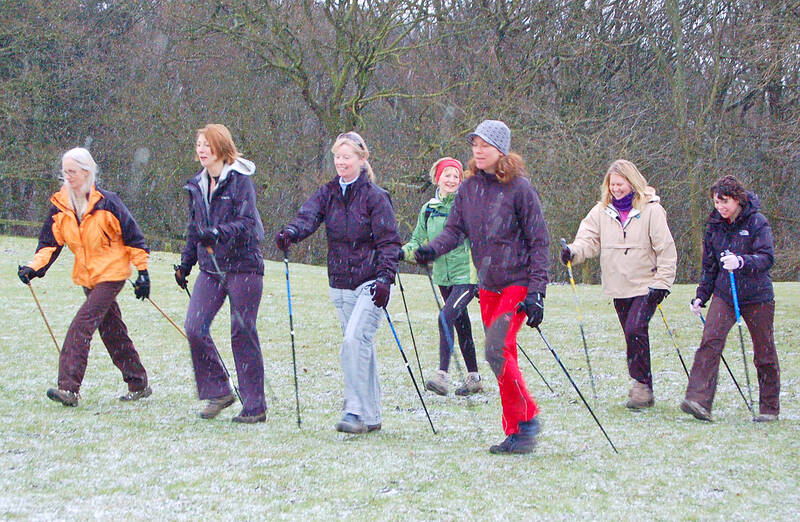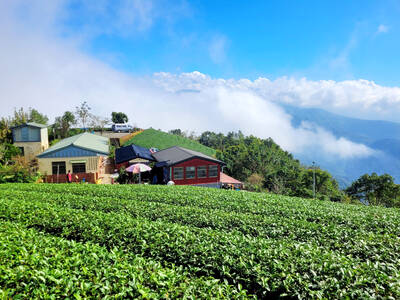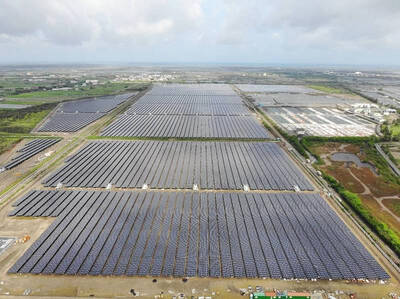Walking faster is linked to a significantly lower risk of developing type 2 diabetes, according to the first global study of its kind.
Type 2 diabetes is one of the world’s major health threats, with its prevalence rising sharply in the last three decades, according to the World Health Organization.
More than 537 million people have been diagnosed, but millions more are estimated to be in the dark about the fact they have the condition. It is a major cause of blindness, kidney failure, heart attacks, stroke and lower limb amputation.

Photo courtesy of Wikimedia Commons
Researchers have known for years that walking — and doing so frequently — is associated with a lower risk of type 2 diabetes. Until now, though it has remained unclear what walking speed is needed to reduce the risk of type 2 diabetes.
Now a worldwide analysis of studies shows that a brisk walk or striding is better for reducing your risk of type 2 diabetes than walking at a slower pace. The pooled data analysis of the available evidence was published online in the British Journal of Sports Medicine.
Researchers found people who walked faster than 3km/h were less likely to develop the condition, while those with a speedier stride of more than 6km/h lowered their risk by 39 percent.
While physical activity is known to be associated with a lower risk of developing type 2 diabetes, researchers from Imperial College London, the University of Medical Sciences in Iran and Oslo New University College in Norway wanted to figure out the optimal walking speed.
The team looked at 10 studies published between 1999 and 2022, which included follow-up periods of between three and 11 years. A total of 508,121 adult patients from across the UK, Japan and the US were included.
Compared with strolling at less than 3km/h, an average or normal walking speed of 3-5km/h was associated with a 15 percent lower risk of type 2 diabetes — irrespective of the time spent walking.
The risk reduced even further with a faster pace, with a fairly brisk walk of between 5km/h and 6km/h associated with a 24 percent lower risk.
Those who walked at a speed of higher than 6km/h had a 39 percent lower risk of developing the condition.
“While current strategies to increase total walking time are beneficial, it may also be reasonable to encourage people to walk at faster speeds to further increase the health benefits of walking,” researchers said.
There were some limitations to the research. Three studies included were rated as having a moderate risk of bias, while the remaining seven were rated as having a serious risk.
The researchers also acknowledged that people with a faster walking speed are more likely to be fitter, with greater muscle mass and better overall health.
But there are plausible explanations for the findings, they explained.
Walking speed is an important indicator of overall health and a key indicator of functional capacity.
Faster walking speed is associated with better cardiorespiratory fitness and muscle strength, both of which are linked to diabetes risk — and brisk walking is good for weight loss, which helps to improve insulin sensitivity.
Neil Gibson, senior physical activity adviser at Diabetes UK, welcomed the findings.
He said the “study highlights what we already know, that being physically active, which can include brisk walking, can help lower a person’s risk of developing type 2 diabetes and that increasing the intensity of activity, such as by walking faster, gives greater overall health benefits.”
“We welcome further research to confirm whether, and to what extent, picking up the pace boosts the positive effects walking can have on reducing the risk of developing type 2 diabetes,” he said.

Every now and then, it’s nice to just point somewhere on a map and head out with no plan. In Taiwan, where convenience reigns, food options are plentiful and people are generally friendly and helpful, this type of trip is that much easier to pull off. One day last November, a spur-of-the-moment day hike in the hills of Chiayi County turned into a surprisingly memorable experience that impressed on me once again how fortunate we all are to call this island home. The scenery I walked through that day — a mix of forest and farms reaching up into the clouds

With one week left until election day, the drama is high in the race for the Chinese Nationalist Party (KMT) chair. The race is still potentially wide open between the three frontrunners. The most accurate poll is done by Apollo Survey & Research Co (艾普羅民調公司), which was conducted a week and a half ago with two-thirds of the respondents party members, who are the only ones eligible to vote. For details on the candidates, check the Oct. 4 edition of this column, “A look at the KMT chair candidates” on page 12. The popular frontrunner was 56-year-old Cheng Li-wun (鄭麗文)

“How China Threatens to Force Taiwan Into a Total Blackout” screamed a Wall Street Journal (WSJ) headline last week, yet another of the endless clickbait examples of the energy threat via blockade that doesn’t exist. Since the headline is recycled, I will recycle the rebuttal: once industrial power demand collapses (there’s a blockade so trade is gone, remember?) “a handful of shops and factories could run for months on coal and renewables, as Ko Yun-ling (柯昀伶) and Chao Chia-wei (趙家緯) pointed out in a piece at Taiwan Insight earlier this year.” Sadly, the existence of these facts will not stop the

Oct. 13 to Oct. 19 When ordered to resign from her teaching position in June 1928 due to her husband’s anti-colonial activities, Lin Shih-hao (林氏好) refused to back down. The next day, she still showed up at Tainan Second Preschool, where she was warned that she would be fired if she didn’t comply. Lin continued to ignore the orders and was eventually let go without severance — even losing her pay for that month. Rather than despairing, she found a non-government job and even joined her husband Lu Ping-ting’s (盧丙丁) non-violent resistance and labor rights movements. When the government’s 1931 crackdown